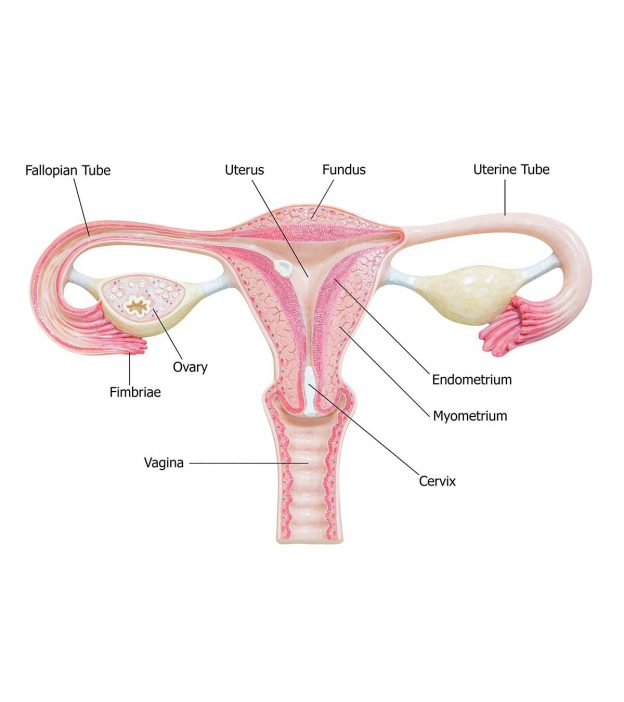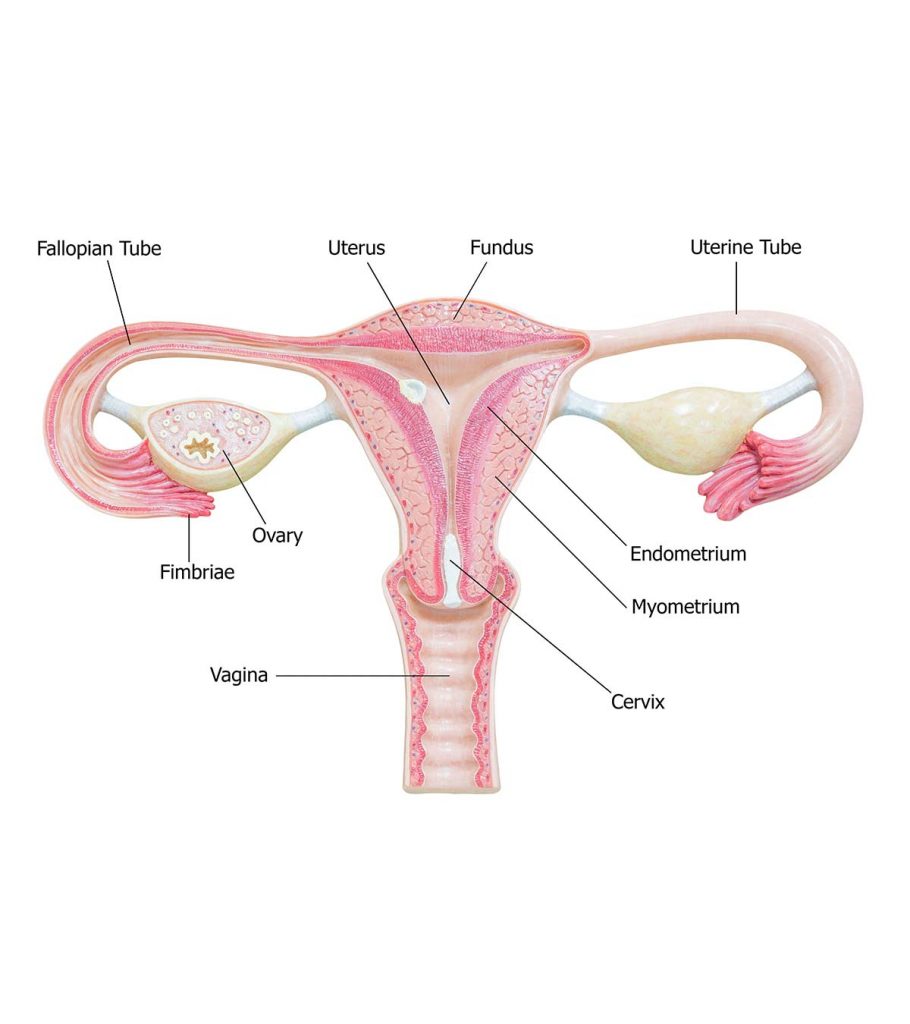[ad_1]

The endometrium thickness in pregnancy plays an essential role in determining issues during pregnancy. The endometrium is the uterine lining where the embryo implants to commence pregnancy.
The endometrium’s thickness changes in each pregnancy month, and it is also a parameter assessed during imaging tests (ultrasound scans). The doctor may check the endometrium thickness to determine the underlying cause of any abnormal uterine bleeding during pregnancy.
In this post, we tell you about the normal endometrium thickness during pregnancy and the various abnormal changes in the tissue’s thickness.
What Is The Endometrium?
The endometrium is the inner lining of the uterus, where implantation of the embryo takes place. It comprises a single-layered prismatic epithelium and cell-rich connective tissue with blood vessels that surround the uterine glands. The single-layered prismatic epithelium consists of three types of cells: secretory cells, cells with cilia, and basal cells.
The endometrium undergoes various morphological and functional changes during menarche. As the level of sex hormones changes in the body during ovulation, the thickness of the endometrial lining also changes to enable the implantation of the fertilized egg. If fertilization doesn’t happen, then the endometrium lining (functional layer) sheds, leading to menstrual flow (1).
Note: The morphology and thickness of the endometrium remain constant before puberty and in menopause.
Normal Thickness Of The Endometrium
The normal thickness of endometrium varies at different stages of the menstrual cycle in premenopausal women. The normal endometrial thickness measurements are (2):
| STAGES | THICKNESS |
|---|---|
| During menstruation | 2 – 4mm |
| Early proliferative phase (day: 6-14) | 5 – 7mm |
| Late proliferative/Preovulatory phase | Up to 11mm |
| Secretory phase (ovulation) | Up to 16mm |
According to a study conducted in Shanghai Jiaotong University, the rate of implantation, clinical pregnancy, and ongoing pregnancy was higher among women who had an endometrial thickness between 8-14mm. The pregnancy rate was negatively affected among the women with stripe’s thickness less than 7mm (3).
Endometrial thickness can also be used as a predictor for normal intrauterine pregnancy if there are vaginal bleeding and sonographic diagnosis of pregnancy of unknown location (4).
The following chart can give you a better idea of how the thickness of endometrium varies during the cycle.
What Causes Thickness of Endometrium?
Both pregnant and non-pregnant women can have an abnormally thickened endometrium due to various reasons (5).
In pregnant women, thickened endometrium could be due to:
- mola, which can make the endometrium look thick
- Pseudogestational sac
- Retained products of conception
- Heterogeneously thickened endometrium, which could be due to fluid collection
- Heterogeneously thickened endometrium due to an intrauterine blood clot
- Molar pregnancy, wherein the multiple small cystic spaces make the endometrium look thickened
- Inflammation of the uterus, also called as endometritis
In non-pregnant women, it could be because of:
- Endometrial carcinoma that gives it a thickened appearance
- Endometrial hyperplasia or over-thickening of the endometrium
- Endometrial polyp, or benign protrusions on the endometrial surface
- Tamoxifen-related changes causing variable appearances of the endometrial surface
- Endometritis
What Are The Symptoms Of An Abnormally Thick Endometrium?
The symptoms of an abnormally thick endometrium lining, also known as endometrial hyperplasia, include (6):
- Heavier bleeding during periods
- Longer periods than usual
- Menstrual cycle shorter than 21 days or longer than 38 days
- Spotting between periods
It is recommended that you visit your doctor if you are experiencing abnormal vaginal bleeding and pelvic pain.
How Is Abnormally Thick Endometrium Diagnosed?
Transvaginal ultrasound helps in identifying abnormal endometrium thickness (7).
How Does The Endometrium Look Like?
The endometrium looks like a dark line on an MRI or ultrasound scan, and it is called endometrial stripe. Here is how the appearance and thickness of endometrial stripe change during the menstrual cycle (2):
- Menstrual and early proliferative phase: In this phase, it appears as a thin and bright echogenic stripe that consists of a basal layer with minimal fluid.
- Late proliferative phase: A trilaminar appearance is seen in this phase. It comprises the basal layer, middle functional layer, and the inner echogenic stripe at the center.
- Secretory phase: Endometrium is the thickest during this phase. The stripe has fluid surrounding it and thus looks uniformly echogenic in an ultrasound.
How Is It Treated?
You should see the doctor and discuss the treatment options. Treatment will depend on the cause for thickening (6).
What Causes Thinning Of The Endometrium?
Thin endometrium results from the impairment of the normal growth of the endometrial tissues. The most common cause is menopause and it is natural. (8):
Other causes are (6):
- Permanent damage to the basal endometrium
- The resistance of estrogen by endometrium surface receptors
- Decreased blood flow to the endometrium
- Testosterone overexposure
Can Endometrial Thickness Indicate Early Pregnancy?
Endometrial thickness can indicate early pregnancy, be it normal or abnormal (ectopic). According to research reports from the University of Texas Southwestern Medical Center, Endometrial thickness between 8-40mm was noted in intrauterine pregnancies of unknown location. Among this, 70% of women had an endometrial thickness between 13-25mm. This study also shows that 70% of women with ectopic pregnancy had an endometrial thickness of less than 13mm (9).
[Read: Do Ovary Cysts Affect Pregnancy?]
1. Does an endometrial thickness of 17mm mean pregnancy?
Having an endometrial thickness of 17mm before pregnancy means you have a good chance of conception and a better clinical outcome (10).
2. Does the endometrium thicken after implantation?
Yes. After implantation, the thickened endometrium from the proliferative phase of the menstrual cycle thickens more. It serves as a site for an embryo’s attachment and nourishment during its first few weeks (11).
3. Can I get pregnant with an 8mm endometrium?
While an endometrium thickness of 8–14mm is ideal for conception, it is possible to become pregnant with a lining less than 7–8mm thick. However, your pregnancy rate may be lower (11).
The endometrium is a crucial tissue in a woman’s body that holds the key to a successful and healthy pregnancy. Therefore endometrial thickness in pregnancy helps doctors determine the progress and state of the pregnancy, including any abnormalities and the progress of the pregnancy. Therefore, awareness about the signs of changing or unusual endometrium thickness is essential as it may indicate an underlying issue such as molar pregnancy, blood clots, or endometritis. Consult your doctor in case of any such abnormal symptoms to seek timely treatment and prevent any complications.
Infographic : How To Improve Endometrium Function And Thickness Before Pregnancy?
Reaching ideal endometrial thickness and functions before conception increases the chance of pregnancy. It also enhances the outcomes of assisted reproductive technologies. Go through the infographic to learn ways to enhance endometrial functions and thickness before pregnancy.
Have you any experiences to share? Please share them in the comments section below.
Key Pointers
- The thickness of the endometrial lining changes during ovulation to allow the fertilized egg to implant.
- Depending on the stage of the menstrual cycle, the typical thickness of the endometrium varies.
- Endometrial disorders such as cancer can produce thickened endometrium in non-pregnant women.
- Menopause is the most prevalent and natural cause of endometrium thinning.
References:
Recommended Articles:


[ad_2]
Source link
